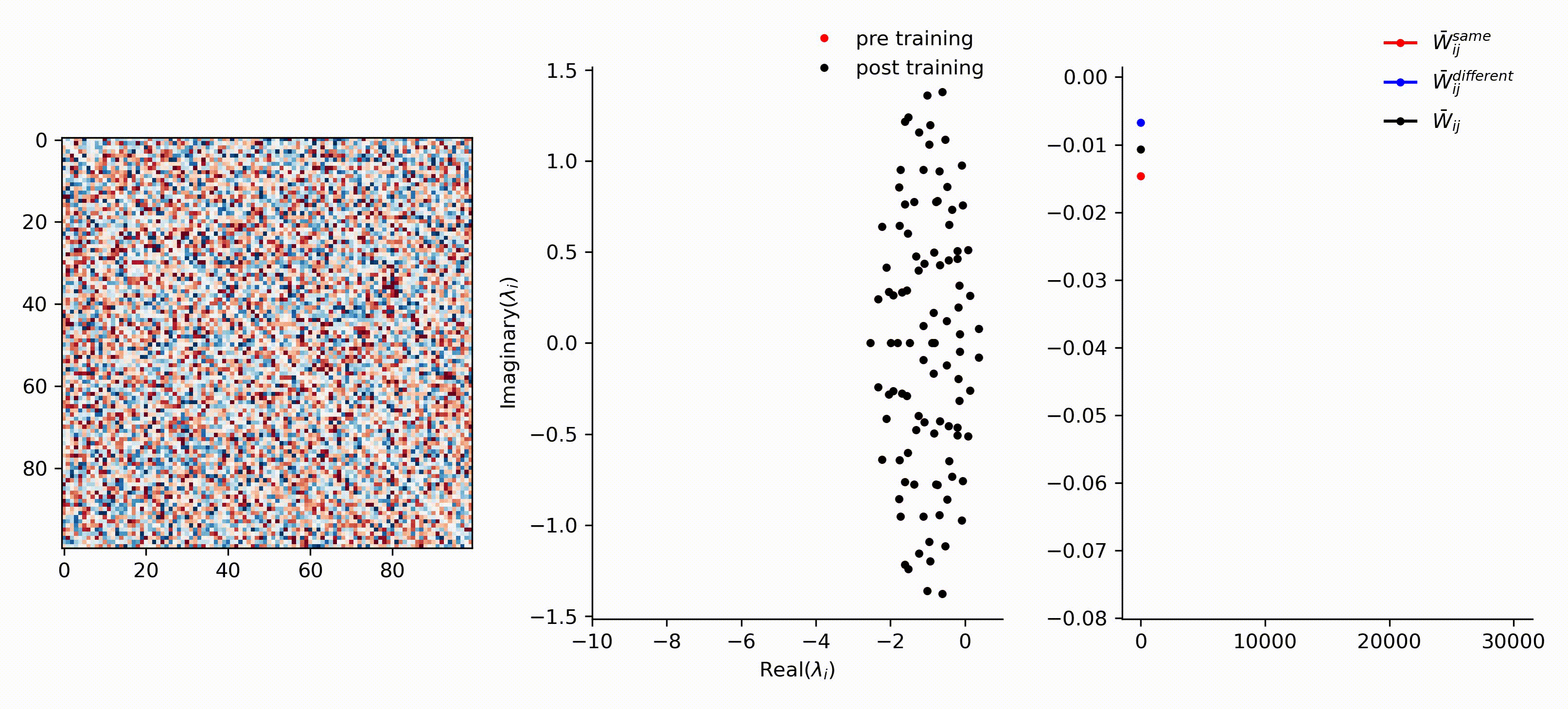This repository contains the implementation code for manuscript:
A time-resolved theory of information encoding in recurrent neural networks
In this work, we show theoretically and empirically that more tightly balanced networks can track time-varying signals more reliably which results in a higher information rate. Moreover, this example code demonstrates how training an RNN on tracking a time-varying input makes it more tightly balanced, and tracking on multiple stimuli leads to the emergence of tightly balanced subnetworks that are weakly connected in between.
- Download Julia
- Julia (>= 1.5, tested on 1.6)
- Flux, PyPlot, Statistics, DelimitedFiles,RandomNumbers, ForwardDiff, BSON
- scipy
To install the required packages, run the following in the julia REPL after installing Julia:
using Pkg
for pkg in ["Flux", "PyPlot", "Statistics", "DelimitedFiles", "RandomNumbers", "ForwardDiff", "BSON"]
Pkg.add(pkg)
end
For example, to train an RNN on tracking two OU-signals, run:
include("example_code/runOneStimulus.jl")
end
Contains the source files.
generateInputOutputOUAnalytical.jl - solves the OU-process distributionally correct to generate input and target output.
trainingBalancedNets.jl - trains a RNN on the autoencoder task and visualizes the results during training.
Example scripts for training networks on one, two and three stimuli.
runOneStimulus.jl trains an RNN on tracking one OU-signal showing that the network becomes more tightly balanced over training epochs.
runTwoStimuli.jl trains an RNN on two OU-signal stimulus showing that the network becomes more tightly balanced over training epochs and breaks up into two weakly-connected subnetworks.
runTheeStimuli.jl trains an RNN on two OU-signal stimulus showing that the network becomes more tightly balanced over training epochs and breaks up into three weakly-connected subnetworks.
Here is a visualization of the recurrent weight matrix and the eigenvalues throughout across training epochs.

A full specification of packages used and their versions can be found in packages.txt .
Results were found not to depend strongly on details of parameters (e.g. temporal discretization dt, network size N, batch size B etc).
For learning rates the default ADAM parameters were used to avoid any impression of fine-tuning.
For all calculations, a 'burn-in' period was discarded to let the network state converge to a stationary state.
All simulations were run on a single CPU and took on the order of minutes to a few of hours.